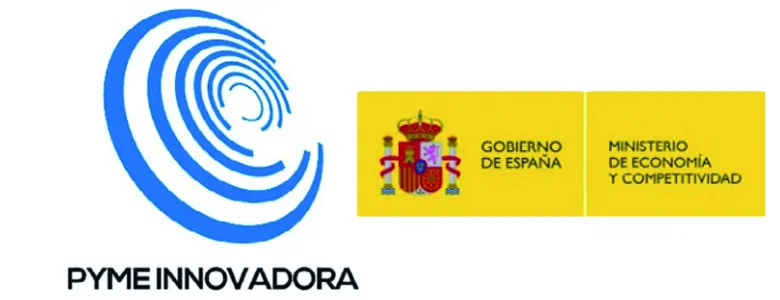
HORIZON EUROPE

 Europeo
Europeo
Expected Outcome:Project results are expected to contribute to all of the following expected outcomes:
Better understanding of the properties of products using bio-based material(s) derived from secondary sources by the construction sector stakeholders;Roadmaps for the industrial scale production or re-use (beyond the established state-of-the art recycling and down-cycling) of at least four different types of products using secondary bio-based materials unlocking and demonstrating the full potential and benefits of the circular bio-based economy;Enhanced environmental performance of the construction products, including enhanced resource efficiency and potential long-term carbon removal. Scope:Although the NEB has been championing bio-based materials for the built environment, more research is needed on products that make use of secondary bio-based construction materials, such as from by-products or waste from other industries or processes, including bio-based composites and residues/by-products from agriculture or from fishing, aquaculture and agro-food industries, in line with the cascading principles[1]. Using such products in the construction sector will reduce reli...
ver más
Expected Outcome:Project results are expected to contribute to all of the following expected outcomes:
Better understanding of the properties of products using bio-based material(s) derived from secondary sources by the construction sector stakeholders;Roadmaps for the industrial scale production or re-use (beyond the established state-of-the art recycling and down-cycling) of at least four different types of products using secondary bio-based materials unlocking and demonstrating the full potential and benefits of the circular bio-based economy;Enhanced environmental performance of the construction products, including enhanced resource efficiency and potential long-term carbon removal. Scope:Although the NEB has been championing bio-based materials for the built environment, more research is needed on products that make use of secondary bio-based construction materials, such as from by-products or waste from other industries or processes, including bio-based composites and residues/by-products from agriculture or from fishing, aquaculture and agro-food industries, in line with the cascading principles[1]. Using such products in the construction sector will reduce reliance on primary resources, hence minimising the environmental impact associated with their extraction and processing.
Proposals should increase the potential of innovative bio-based products making use of materials from secondary sources for construction applications, thereby enhancing the circular bio-based economy in the construction sector, in line with the NEB values and the cascading principles. Project results will allow to inform the construction sector’s supply chain, including architects, developers and other construction sector stakeholders, about the availability, potential, and added-value of bio-based materials from secondary sources for new construction and renovation projects.
Proposals are expected to, for each secondary bio-based product covered:
Assess its properties, benefits, design and construction possibilities and aesthetic[2]. This should cover at least the structural, thermal, acoustic, health-related and durability properties as well as the life cycle performance and environmental impact. This should also include the potential for deconstruction, re-use and recycling when buildings/public spaces undergo changes;Validate it in a relevant environment;Identify the sectors and applications where the chosen secondary bio-based material(s) could be embedded in construction processes and practices;Evaluate its economic scalability, including pathways for setting up efficient circular value chain to collect the secondary source.Contribute to the development of relevant European standards. Cross-sectoral and cross-disciplinary collaboration is encouraged between profiles such as architects, artists, designers, engineers, biologists, urban planners, environmentalists, social scientists, and by extension the broader cultural and creative sector.
Actions are strongly recommended to collaborate with and build on the work of relevant research, including national or European funded research[3]. Actions are also encouraged to take into account and contribute with their results to future work in the field of regenerative design applied to architecture.
Projects shall share their intermediate and final results and findings with the 'New European Bauhaus hub for results and impacts' that will be established[4]. It will also cooperate, interact and take part in its activities when relevant to support the achievement of its objectives. Resources should be dedicated to engage with this Coordination and Support Action.
[1] Guidance on cascading principles is available at: https://op.europa.eu/en/publication-detail/-/publication/9b823034-ebad-11e8-b690-01aa75ed71a1/language-en/format-PDF/source-80148793
[2] Guidance on the three NEB values is provided in the NEB Compass, available at: https://new-european-bauhaus.europa.eu/system/files/2023-01/NEB_Compass_V_4.pdf
[3] Some indicative examples could be: HORIZON-CL4-2022-TWIN-TRANSITION-01-10: Circular flows for solid waste in urban environment; HORIZON-CL6-2022-CIRCBIO-01-05: EU-China international cooperation on unlocking the potential of agricultural residues and wastes for circular and sustainable bio-based solutions; HORIZON-CL6-2022-CIRCBIO-02-01-two-stage: Integrated solutions for circularity in buildings and the construction sector; HORIZON-CL5-2022-D4-02-05: More sustainable buildings with reduced embodied energy / carbon, high life-cycle performance and reduced life-cycle costs; HORIZON-CL6-2023-CIRCBIO-01-2: One hundred circular model households: making European households sustainable through inclusive circular practices; HORIZON-CL6-2023-CircBio-01-7: Symbiosis in the bio-based industrial ecosystems; HORIZON-CL4-2024-TWIN-TRANSITION-01-38: Hubs for circularity for industrialised urban peripheral areas.
[4] See HORIZ-MISS-2024-NEB-01-03
ver menos
Características del consorcio
 :
La ayuda es de ámbito europeo, puede aplicar a esta linea cualquier empresa que forme parte de la Comunidad Europea.
:
La ayuda es de ámbito europeo, puede aplicar a esta linea cualquier empresa que forme parte de la Comunidad Europea.
Características del Proyecto
Gastos relacionados con el personal que trabaja directamente en el proyecto basado en las horas efectivas dedicadas, basado en el coste empresa y ratios fijos para determinados empleados como los dueños de la compañía.
Pagos a terceros externos para realizar tareas específicas que no pueden ser realizadas por los beneficiarios del proyecto.
Incluyen la adquisición de equipos, amortizaciones, material, licencias u otros bienes y servicios necesarios para la ejecución del proyecto
Gastos diversos como costes financieros, certificados de auditoría o participación en eventos no cubiertos por otras categorías
Gastos generales no asignables directamente al proyecto (como electricidad, alquiler u oficina), calculados como un 25% fijo sobre los costes directos elegibles (excepto subcontratación).
Características de la financiación
Para el presupuesto subvencionable la intensidad de la ayuda en formato fondo perdido podrá alcanzar como minimo un 100%.
Información adicional de la convocatoria

Otras ventajas
Ayudas Similares

| Próximamente

| Próximamente

| Próximamente

